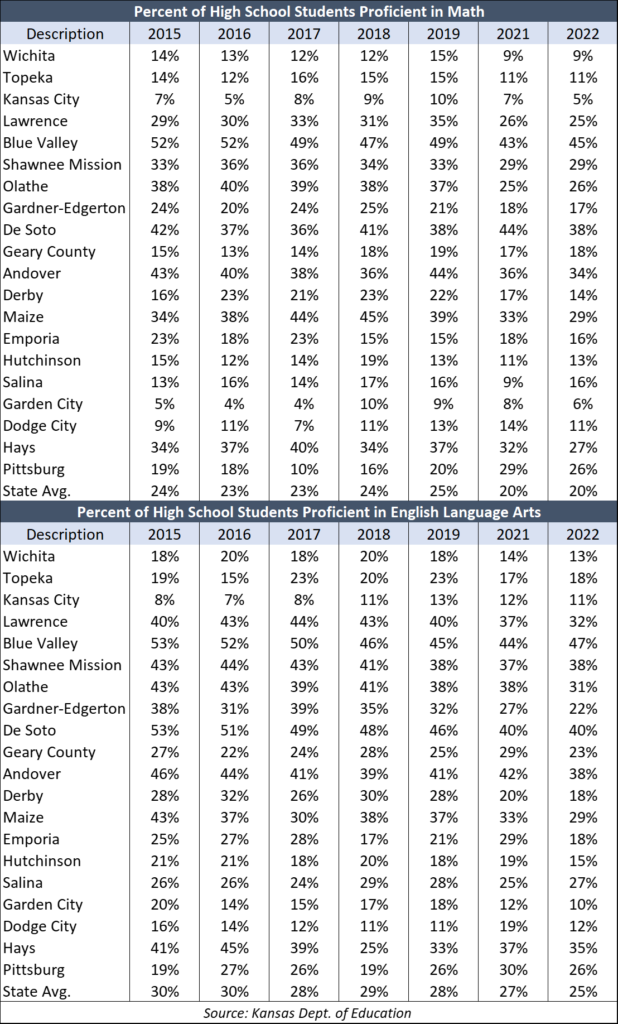[vc_row][vc_column][vc_column_text]Student achievement results on the just-released 2022 state assessment are disappointingly low, which is no surprise. And neither does the dismissive attitude of state education officials.
Commissioner Randy Watson told the State Board of Education yesterday that math scores improved slightly but were not back to 2019 levels, and English Languages Arts slightly declined. That’s it. Watson gave no specifics about the level of achievement, like how many students are proficient or below grade level in any subject. And, predictably, no one on the State Board of Education asked for that information. State officials don’t want parents to know that achievement is much lower than they have been led to believe, and previous board discussions revealed most board members are ill-equipped to understand the data.
 For example, only 29% of students tested (grades 3-8 and 10) are proficient in math, and just 32% are proficient in English language arts. Both proficiency levels are below pre-pandemic levels, and achievement has been consistently low since 2015 when 32% and 41% were proficient.
For example, only 29% of students tested (grades 3-8 and 10) are proficient in math, and just 32% are proficient in English language arts. Both proficiency levels are below pre-pandemic levels, and achievement has been consistently low since 2015 when 32% and 41% were proficient.
Education officials contend that more money is needed to improve achievement, but results are dropping even though per-student funding increased from about $13,000 to $17,000 over the period.
Learning loss from the pandemic is tragically expected and isn’t a Kansas-only phenomenon. And yet, this amounts to a rise-and-repeat cycle from education bureaucrats at KSDE, KASB, et al. Twelve years ago, they sued for more money in Gannon after tiny recession-related cuts in the Sebelius/Parkinson Administration. Legislators increased funding by more than $1 billion, but test scores aren’t improving. “Give us more.” Scores remain flat… “Give us more.” Pandemic hits… “Give us more.” Scores decline…. You get the picture.
One major factor in persistently low achievement levels is the Department of Education and the State Board de-emphasizing academic preparation. For example, in Giving Kids a Fighting Chance with School Choice, we explain that their Kansans Can initiative adopted five outcomes for measuring progress that disregards academic preparation. Social-emotional growth, kindergarten readiness, individual plans of study, graduation rates, and postsecondary completion/attendance are not measures of academic progress.
Proficiency declines as students move through school
Achievement levels are typically at the lowest in high school, and the slide begins very early.
The table below shows that 51% of third graders were proficient in math in 2015. Those students were in the fourth grade the following year, and proficiency fell to 36%. Proficiency continued declining in the fifth and sixth grades, dropping to 33% and 31%, respectively, then fell to 28% in the seventh grade. Now, in the tenth grade, only 20% are proficient.

Proficiency erosion is well known to education officials, yet they take no corrective action.
High school results on the 2022 state assessment
These tables show high school proficiency trends for 20 of Kansas’s larger districts.
Only five districts now have higher proficiency in math than in 2015, and they all have less than half of their high school students proficient. In English language arts, just three districts are doing better than in 2015, and none have half or more of their students above 50% proficiency.

The 2023 legislative session will see more of the same from the public school lobby. They will ask for more money and less accountability and continue deceiving legislators about achievement levels. In other words, rinse and repeat.
The evidence presented in Giving Kids a Fighting Chance with School Choice demonstrates that parents cannot count on the public education system to close achievement gaps and improve stubbornly low outcomes for all students. Local school boards and district administrators place a greater priority on the institutional interests of the system than on students’ needs, and that won’t change until enough parents insist that the Legislature implements a money-follow-the-child program for every student in Kansas.[/vc_column_text][/vc_column][/vc_row]




